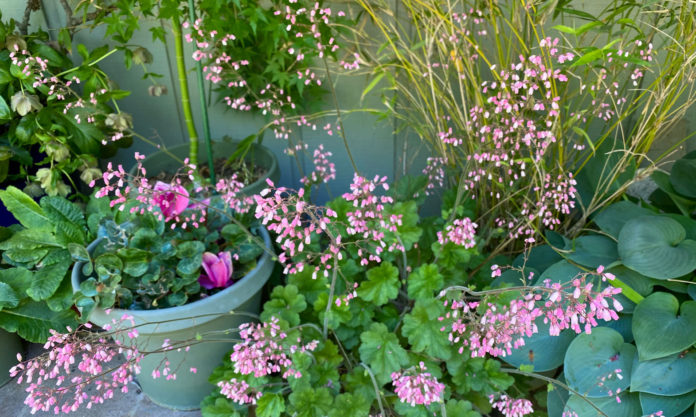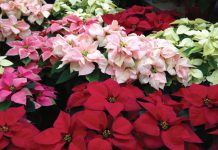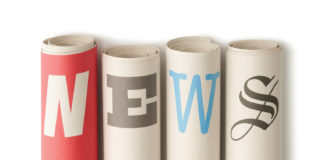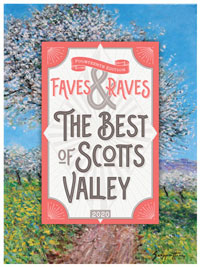A couple weeks ago I wrote about including California native plants in your garden. Since I have limited ground to garden, I mostly have containers and have been quite successful as long as I match the sun or shade to the right plant. You’ve heard it before: “Right Plant, Right Place.” So here are some tips on native plants that do well in containers.
At my front entry that gets morning sun only, I have a huge coral bell (Heuchera micrantha) that started out as a cutting wrapped in wet paper towels that a neighbor had found growing at the edge of the forest nearby. It loves it here. Other plants like salvia would not be happy there at all. So it’s definitely the right plant for the right place. I’ll have to divide and transplant it next spring, but it blooms for such a long time and the hummers love it so I never want to disturb it.
Adding California natives to my collection of container plants has been a goal for a long time. Besides attracting birds and wildlife to the garden they use less water than most container plants plus they are beautiful.
Gardening in containers is easy. You can control the soil, water and light and the gophers can’t undermine your efforts. There are a lot of California native plants that do well in containers and I’m going to place them where both the birds and I can enjoy them.
For some of my largest containers I’ll choose from natives like Western Azalea (Rhododendron occidentale), Deer Grass, Chaparral Pea or Giant Chain Fern. Any of the taller growing ceanothus and manzanita would look great too by themselves or combined with smaller growing plants.
For small to medium containers I can use Conejo Buckwheat, Hummingbird Mint, Penstemon heterophyllus, Mimulus, Woolly Blue Curls or Coastal Daisy. These combine well with colorful Lewisia, Dog Violets or Wild Strawberry.
I might combine a madrone with a Canyon Gray Coastal Sagebrush (Artemisia californica), which grows about a foot high and will trail over the side of the container, adding a beautiful gray color to contrast with the rich green of the other leaves. I also like the combination of California Hazelnut, Deer Fern, Redwood Sorrel and Wild Ginger.
Some of the most dramatic containers utilize the concept of combining a thriller, some fillers and a spiller or two. Not all my containers will use this formula, but I seem to be drawn to those that do. Plants in nature can be quite random in the way they grow together and still be lovely. Containers need a bit more order to dazzle and direct the eye.
Thrillers act as the centerpiece of a container. They are usually big, bold and beautiful. Giant Elk Clover is one such California native that is an attention getter. Chilopsis linearis (Desert Willow) is another great subject for containers as it is slow growing and beautiful in leaf and flower. Other architectural natives that will catch your eye as the centerpiece of a container are Hardy Hibiscus (Rose Mallow) and Pacific Dogwood. The thriller goes in the center of the pot or if your container will be viewed from only one side it goes in the back.
Next come the fillers. They can be foliage or flowering plants, but they should complement and not overwhelm your largest plant. Usually they have a mounding shape and I’ll plant several around the thriller. Good fillers include Heuchera micrantha and Western Maidenhair fern.
The last plants I’ll add are the spillers, which are small and will soften the edge of the container. Redwood Sorrel, Wild Ginger and Miner’s Lettuce are good choices. California Fuchsia would look spectacular with its red or orange flowers and grey foliage spilling down the side of my container.
The best overall soil mix for natives in containers is sharp sand and horticultural pumice added to a good potting soil. Never use perlite or that puffed up pumice because it will float and look terrible. Happy Container Gardening.
Jan Nelson, a landscape designer and California-certified nursery professional, will answer questions about gardening in the Santa Cruz Mountains. Email her at ja******@*ol.com, or visit jannelsonlandscapedesign.com.












